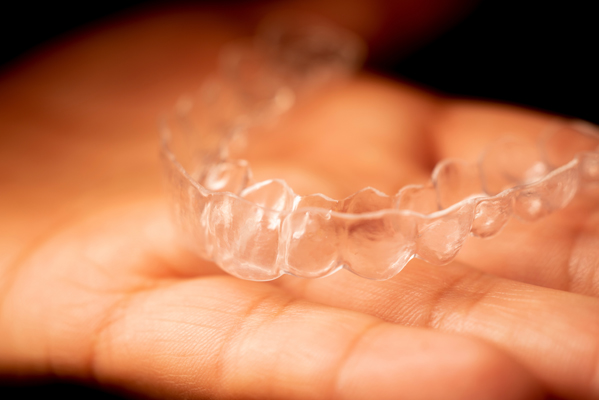Invisalign Clear Aligners: What Happens After Treatment Is Over

Invisalign® clear aligners can straighten teeth without compromising the appearance of a patient's smile. These invisible braces are made out of clear plastics and are barely noticeable when worn. It is a huge change from the traditional metal braces that were the standard way to straighten teeth for more than a century.
An overview of Invisalign clear aligners
Clear aligners straighten teeth the same basic way metal braces do. The aligner applies a constant force on the patient's teeth, slowly pushing them to a better position. Braces do the same thing but with metal wires and brackets that are impossible to miss. This ruins the appearance of the patient's smile, and children who wear braces often report being bullied or teased because of it.
Invisalign® clear aligners can be used to fix a wide range of dental issues like overbites, underbites, crooked teeth, crowded teeth, and gaps between teeth. The range of orthodontic issues Invisalign® can fix has improved over the years, but these oral appliances are most effective on teeth issues caused by poor alignment.
Life after treatment with Invisalign® clear aligners
The quest for straighter teeth does not stop when the Invisalign® treatment is over. The reality is that a person's teeth will continue to move and shift throughout their lives. That is where retainers come in. These oral appliances are used to keep the alignment of the patient's teeth in the desired position.
There are a variety of retainers that can be used to maintain the alignment of a person's teeth:
- Fixed retainers: These are permanently fixed appliances that are fastened to the back surfaces of the patient's teeth. They prevent the person's teeth from moving back toward their position before treatment. Fixed retainers are often recommended for children to ensure they are able to keep the results of their teeth straightening treatment.
- Removable retainers: These are removable appliances that are worn as directed. Some patients only need to wear these at night to maintain the alignment of their teeth.
- Hawley retainers: These consist of a plastic piece and a wire that goes over the front surfaces of the patient's teeth. They are the least aesthetic retainers, but they are easy to adjust and durable.
How often a patient has to wear their retainer often varies based on the severity of the alignment issue that created a need for treatment. Some patients have to wear one for most of the day, while others only need to wear it at night. It is important to follow the schedule recommended by the dentist to prevent teeth from shifting.
Frequently asked questions about retainers
Getting to the end of your teeth straightening treatment? Let us go over some of the questions you might have regarding retainers:
1. Are there different types of retainers?
There are two main types of retainers: removable and fixed. Fixed retainers are also called bonded retainers, and they are firmly attached to the back of the patient’s teeth. This makes them the most effective type of retainer since they constantly keep the patient’s teeth properly aligned.
Removable retainers are the more convenient option since they can be removed for oral hygiene and meals. However, their effectiveness is diminished if the patient fails to wear them daily as instructed.
2. How long must patients wear retainers?
There is no clear answer to this question since it comes down to how severe the patient’s teeth alignment issues were. Generally speaking, the longer a patient wears a retainer, the longer their teeth remain straight.
Many patients start with fixed retainers and then transition to removable ones. They will initially have to wear their removable retainer all day and night, but they will eventually be cleared only to wear it when they go to bed.
3. How long does it take to get used to retainers?
It typically takes a few days to adjust to having a retainer. Patients might feel extra pressure on their teeth, their saliva production might increase, or the appliance might impact their speech. Most of these issues go away within a few days as your teeth and gums get used to it.
Retainers maintain the results of treatment
There is no point in doing all that hard work to straighten your teeth only to lose the results. A retainer prevents that from happening, and there is a good chance you will not have to wear it all day long. Call or visit our Kendall clinic to learn more about how to take care of your teeth after getting Invisalign® treatment.
Request an appointment here: https://blissdentalmiami.com or call Bliss Dental at (305) 564-2530 for an appointment in our Kendall office.
Check out what others are saying about our dental services on Yelp: Clear Aligners in Kendall, FL.
Related Posts
If you are looking to improve your smile, dental veneers may be the answer. They can be a great way to get a natural-looking smile without needing metal or tooth-colored fillings. This guide will teach you everything you need to know about dental veneers, including the types, benefits, placing process, and how to care for…
Seeing your dentist for dental veneers will start with a consultation. This is the right opportunity to find out more about this treatment. Understanding the process means asking the right questions. Here are three questions to ask your dentist before you get your dental veneers.If the patient chooses temporary veneers, these restorations are not attached…
Implant-supported dentures have the look and feel of natural teeth, and these appliances also need to be carefully cleaned and maintained like natural teeth. When combined with healthy practices, implant-supported dentures can offer many dental health benefits.First, their stability can allow patients to enjoy a wider variety of healthy foods. Eating a varied diet can…
Dental veneers may be the most effective option to repair uneven, misshapen, or broken teeth. They can also help reduce gaps in the teeth. Traditional veneers come in two main types: porcelain and composite resin. While both can help you achieve that movie-star smile, they have some differences. This article will explore both porcelain and…

